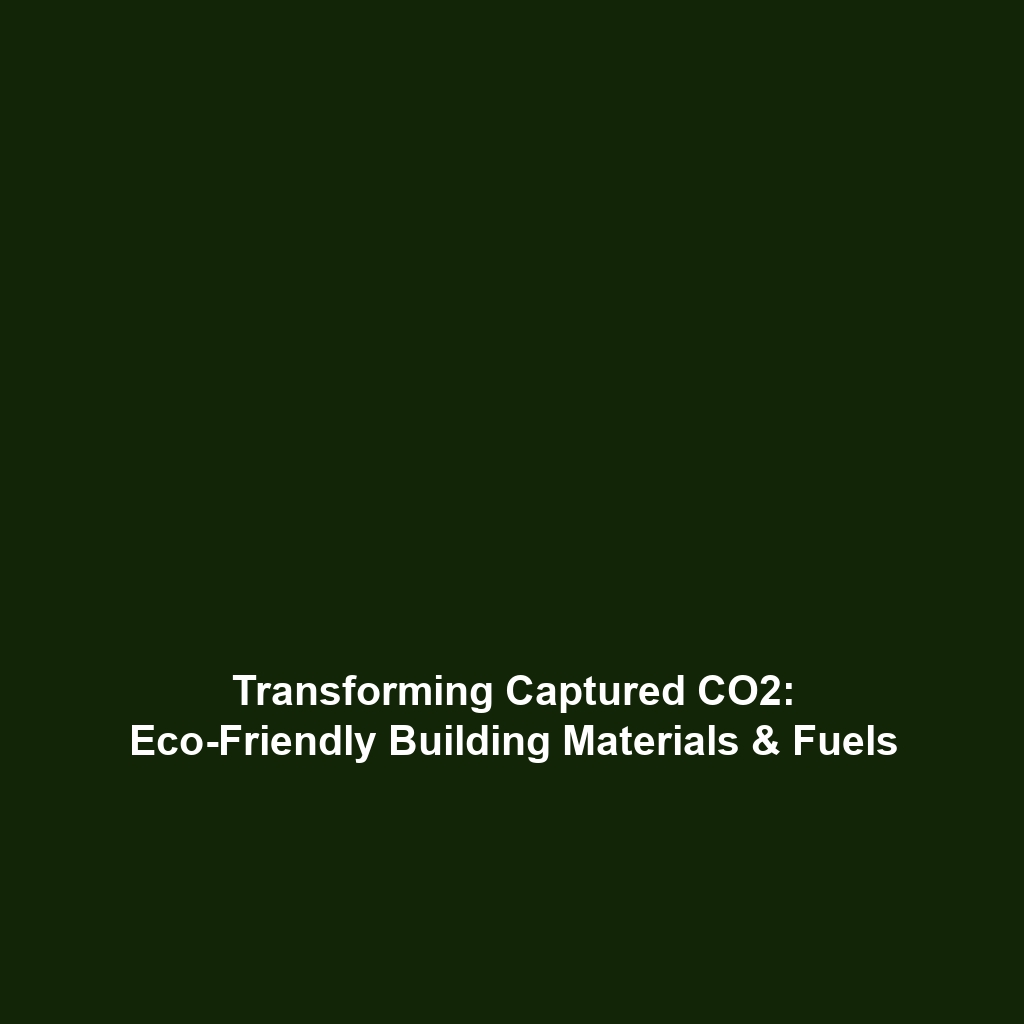Utilizing Captured CO2 in the Production of Building Materials, Chemicals, and Fuels
Introduction
As the world grapples with climate change, Carbon Capture & Storage (CCS) offers innovative solutions for reducing carbon dioxide emissions. One of the most promising avenues within CCS is the utilization of
captured CO2 in the production of building materials, such as concrete, as well as in the synthesis of chemicals and fuels. This process not only minimizes the carbon footprint but also
transforms waste into valuable resources, making it a significant step towards a sustainable future. Understanding the multifaceted applications of captured CO2 is crucial for industries aiming to adhere to global climate
targets.
Key Concepts
The integration of captured CO2 into various products is grounded in several core concepts:
Carbon Utilization
Carbon utilization involves converting captured CO2 into useful materials or energy, effectively closing the carbon loop. This process is essential within the context of CCS as it addresses both waste management and resource
generation.
Cement and Concrete Production
Traditional cement production is a leading source of greenhouse gas emissions. By incorporating captured CO2 in concrete manufacturing, the carbon intensity of this critical building material can be significantly reduced.
Synthesis of Chemicals and Fuels
Captured CO2 can also be utilized to produce various chemicals and fuels, thus replacing fossil fuels with more sustainable alternatives and promoting energy efficiency.
Applications and Real-World Uses
The applications of captured CO2 span across numerous industries, demonstrating its versatility:
- Concrete Manufacturing: Many companies are now adopting technologies that enable the injection of captured CO2 into concrete mixtures, enhancing strength and reducing emissions.
- Chemical Production: Various chemical processes, such as the production of methanol and urea, have started employing captured CO2 as feedstock.
- Synthetic Fuels: Research is ongoing into converting captured CO2 into synthetic fuels, providing a renewable energy source that can mitigate reliance on traditional hydrocarbons.
Current Challenges
Despite its potential, several challenges impede the widespread adoption of captured CO2 in building materials, chemicals, and fuels:
- Economic Viability: The high costs associated with capturing and utilizing CO2 can be prohibitive.
- Technical Limitations: Current technologies may not efficiently convert CO2 into all desired products.
- Regulatory Hurdles: Uncertainties in regulatory frameworks can complicate the implementation of CO2 utilization technologies.
Future Research and Innovations
The future of captured CO2 utilization is promising, with advancements continually emerging:
- Next-Generation Technologies: Innovations in catalytic processes may enhance the efficiency of converting CO2 into chemicals and fuels.
- Improved Concrete Formulations: Researchers are developing concrete mixes that harness the full potential of captured CO2, focusing on both environmental performance and cost reduction.
- Collaborative Research Initiatives: Increased collaboration between industry and academia is paving the way for groundbreaking discoveries in CO2 utilization.
Conclusion
The utilization of captured CO2 in the production of building materials, chemicals, and fuels represents a transformative opportunity within the framework of Carbon Capture & Storage (CCS). By addressing both
climate change and resource efficiency, these applications hold the key to a sustainable future. It is vital for stakeholders in industry, research, and policy to collaborate to overcome existing challenges and
make this innovative approach a widespread reality. For more insights into sustainable technologies and carbon management, please explore our related articles on sustainable building materials and carbon capture innovations.

Leave a Reply